The ancient city of Dara is located within the borders of Oğuz Village in the Mardin province of Türkiye. It was built into natural limestone cliffs at the end of the Mesopotamian Plain, at the beginning of the Tur Abdin Mountains, in a stream bed running east-west. The city is 30 kilometers from Mardin, 20 kilometers from Nusaybin, and about 10 kilometers from the Syrian border. In ancient times, the stream flowing in this area was called Cordis. The present village settlement was founded in the late 18th century.

Dara Ancient City (T.C. Mardin Governorship)
Name Origin and Early Period Information
The origin of the name Dara is associated with Darius III, one of the rulers of Ancient Iran. According to the Syriac historian Abu'l Farac, Darius III was killed here in a battle with Alexander the Great, hence the name Dara. According to other ancient sources, the city was founded by Arsakes and was first built on Mount Zapaortenon (recorded by Iustinus, based on Pompeius Trogus). However, archaeological excavations have uncovered traces beyond these early accounts, dating back to 3,000 BC.
Roman and Byzantine Period
Dara became an important strategic base during the intensification of the Roman-Sassanid wars. In the war with the Sassanids in 503 AD, the Eastern Roman army suffered a heavy defeat, whereupon the Eastern Roman Emperor Anastasius I (491-518) had the city rebuilt as a military garrison city in 507-508 AD. The city was also called Anastasiopolis during this period. Anastasius made Dara the most important military center in Mesopotamia by building 4-kilometer double-line walls, fortifications, and water cisterns.
During the reign of the Byzantine Emperor Justinian I (527-565), the city was further fortified and its walls and defense systems were improved. Dara became Justinian's most important line of defense in the east. The city's military architecture was developed in response to Sassanid threats, and for many years it was one of the main defense points on the Byzantine-Sassanid border.
Political and Military History
The ancient city of Dara came under Sassanid rule twice between 573-591 and 606-620. It was conquered by Islamic armies in 640 A.D. and came under Arab rule. In the 10th century, Dara came under Byzantine control again and was conquered by Artuqid Bey Timurtas in 1150. In the 13th century, the city was largely destroyed by the Ilkhanids, who invaded the region, after which the city was gradually abandoned. Over time, the village settlement developed intertwined with the ancient buildings, and most of the ruins of the ancient city remained under the village houses.
Urban Structure and Architectural Elements
Dara was built in harmony with the natural rock structure. The city's architecture is typical of Roman and Byzantine military city architecture.
Necropolis Area (Cemeteries)
The area used as a quarry on the hills west of the city was later turned into a cemetery. Rock tombs, sarcophagi, and simple cist tombs attract attention. This area contains traces of the burial traditions of the Pagan, Christian, and Islamic periods.
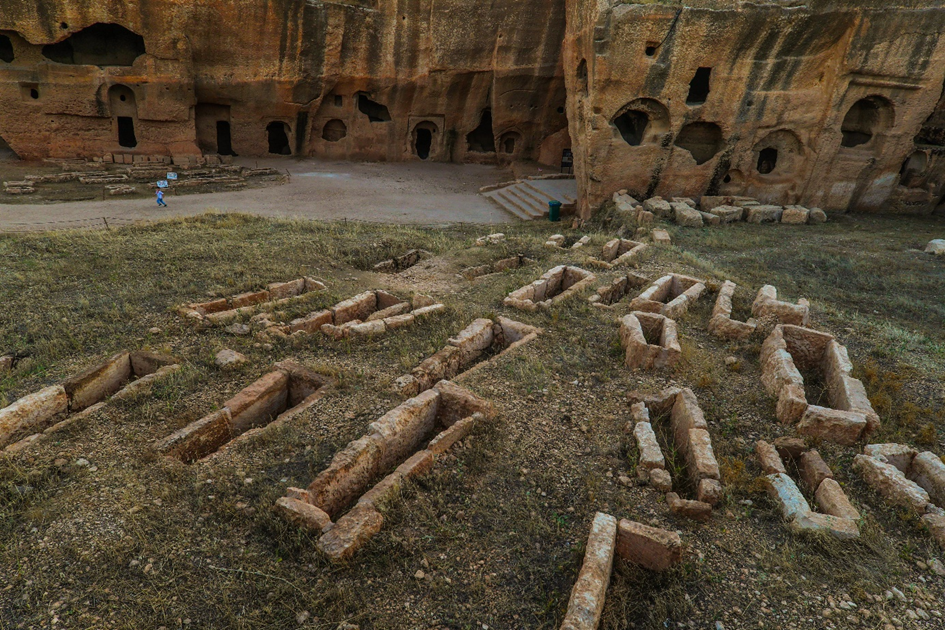
Cemetery Area (Governorship of Mardin)
Walls
The 4-kilometer-long city wall surrounding the city was supported by 28 towers with 2-meter-thick double walls. Most of the walls have not survived to the present day. One of the two main gates is in the west and the other in the east.
Necropolis Area
In the cemeteries located in the south and northeast of the city, there are rock tombs, sarcophagus tombs, cist tombs, and underground gallery tombs. The grave types showing the transition from the pagan period to the Christian period take place together.
Multi-storey Gallery Tomb
The three-story tomb structure carved into the rock consists of various rooms and corridors. On the upper floor, there are figures depicting the miracle of Ezekiel giving life to the dead. This scene reflects the religious beliefs and grave art of the period.
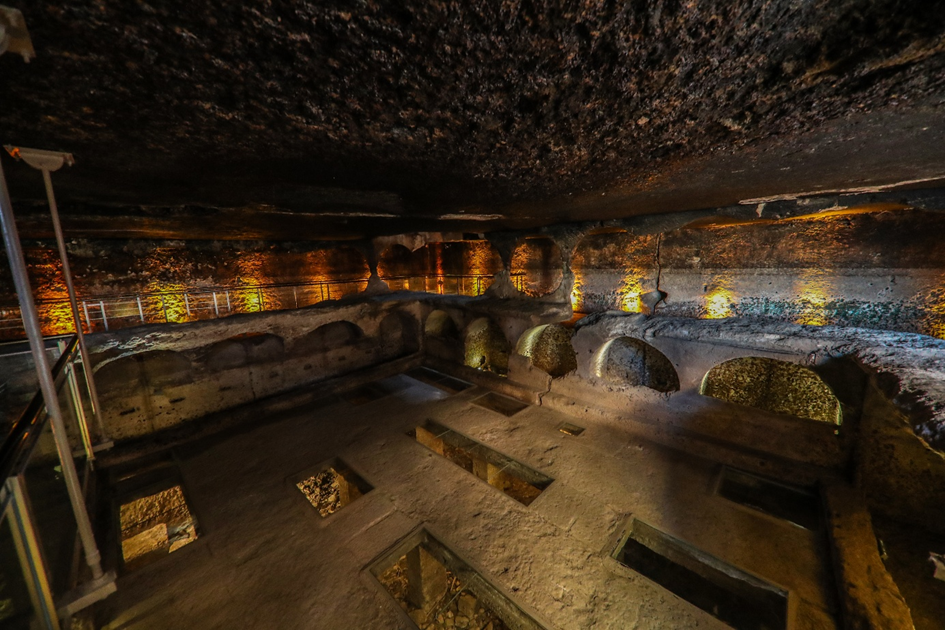
Multilevel Gallery Tomb (Governorship of Mardin)
Agora Street
The street, which constitutes the main trade axis of the city, extends in the east-west direction and is paved with stone. There are shops and storage areas on both sides of the street.
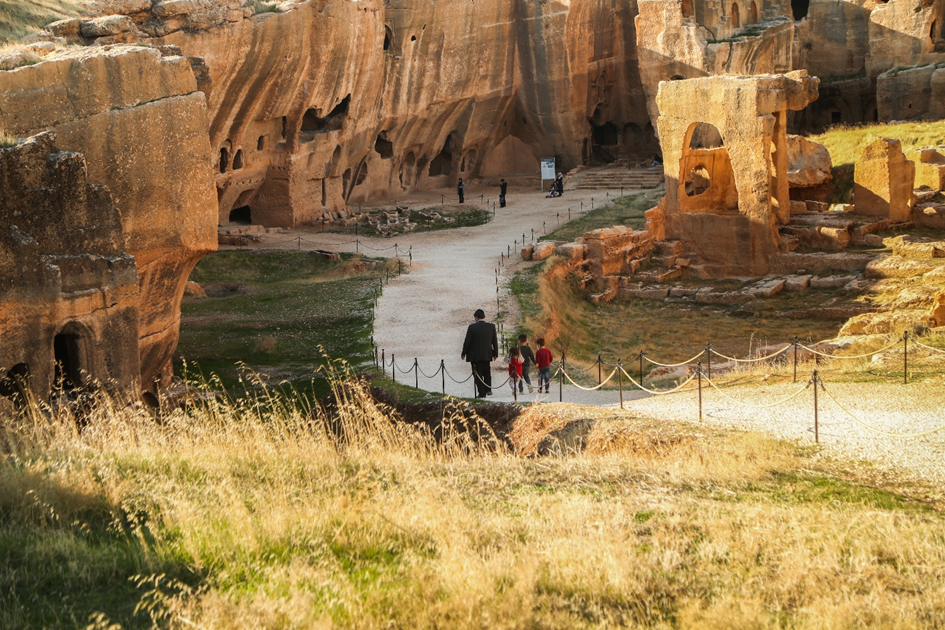
Agora Street (Governorship of Mardin)
Bridges
There are four bridges in the city, one outside the city walls and three inside the city. These are stone bridges built over the Cordis Stream. They are important for water management and transportation.
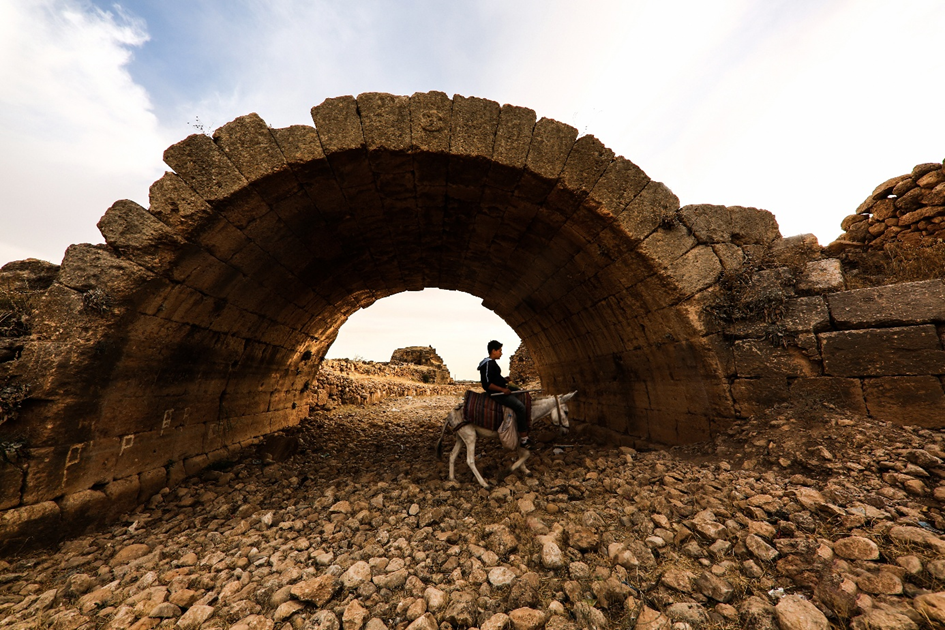
Bridges (Governorship of Mardin)
Maksem and Cisterns
The city's water needs were met through water tunnels and storage structures created by carving the water of the Cordis Stream into limestone rocks. Maksem is the central reservoir of this water system and was used as a water source during the siege periods.

Cisterns (Governorship of Mardin)
Great Church and Baptistery
The Byzantine basilica type of large church draws attention with its three-nave plan and altar area. There are examples of stonework with floral motifs. There is a large baptismal pool to the north of the church.
Church of St. Bartholomew
Dedicated to St. Bartholomew, one of the 12 apostles, this building was built in the city according to the Syriac Christian tradition. The city was also the scene of Bartholomew's religious activities.
Mosaic Structure
Uncovered in 2009, this building has four rooms and a mosaic floor. There are Greek inscriptions on it. It dates to the reign of Emperor Anastasius.
Islamic Cemetery and Shrine
The Islamic period cemetery, located northeast of the city, has been in use since the 12th century. There is also a small tomb structure dating to the 14th-15th century.
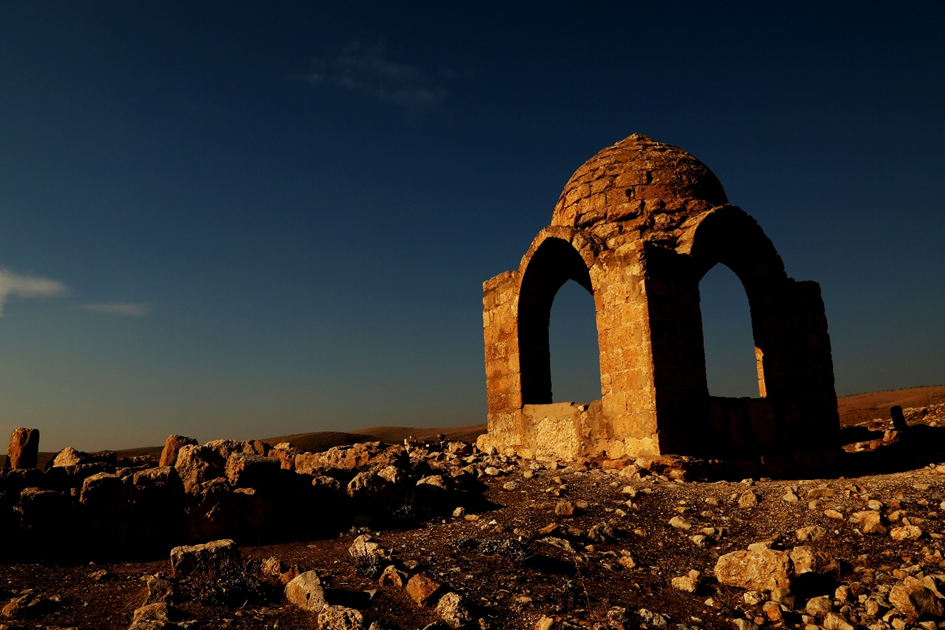 Tomb (Governorship of Mardin)
Tomb (Governorship of Mardin)
Excavations and Current Situation
Archaeological excavations at the ancient city of Dara began in 1986. Under the direction of the Mardin Museum, the excavations revealed the multi-layered structure and architectural diversity of the city. Today, Dara is an archaeological site open to tourist visits. However, the fact that the village settlement is intertwined with the ancient ruins limits the expansion of archaeological work.


